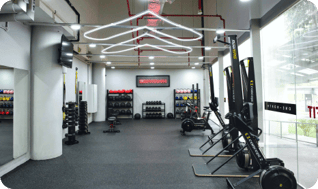In the world of physiotherapy, not all treatments are created equal. But if you’re puzzled as to what the different types of treatment might be, you’re not alone. It’s typical for individuals to need help when evaluating their physiotherapy options.
But don’t fret, we’re here to help you differentiate between active and passive physiotherapy treatments, understand their unique benefits, and ascertain which might be most appropriate for you.
Understanding active and passive physiotherapy
Active physiotherapy involves movements that you perform under the guidance of a physiotherapist. Typically, these will be exercises that strengthen muscles, improve flexibility, and enhance overall body function. This treatment puts you in the driver’s seat, requiring your direct effort and participation. Examples include strength training exercises, stretching routines, balance and coordination drills, and functional movement practices.
Passive physiotherapy involves treatments that are done to you by a physiotherapist. They typically promote healing and prepare the body for more active movements. Examples include manual therapy (massage etc.), shockwave therapy, hot or cold therapy, and dry needling.
Their effectiveness
There’s an increasing emphasis on the importance of active physiotherapy for better long-term outcomes for many conditions, particularly chronic pain and musculoskeletal disorders. Its potency lies in how it empowers you to take control of your health to help prevent future injuries. With active physiotherapy as the cornerstone of an effective treatment plan, you may have to schedule fewer treatment sessions, experience less pain, and recover faster.
While passive physiotherapy may not always be the focus of long-term treatment plans, it still plays an important role in the early stages of recovery. The various therapies that may be employed by a physiotherapist help manage pain, improve tissue healing, reduce inflammation, and create the foundation for active physiotherapy.
When to use them
Determining when to use different treatments, or employ a combination of both, depends on several factors unique to the individual and their current condition or stage of recovery.
Active physiotherapy is most appropriate:

- During rehabilitation: Once an injury is no longer severe.
- For chronic conditions: To address underlying muscle imbalances and movement patterns.
- For injury prevention: To improve overall fitness and body awareness.
- For return to work programs: To help individuals do their jobs effectively and safely.
- For long-term management: For ongoing maintenance and to reduce the risk of recurring injuries.
Passive physiotherapy is most appropriate:

- For acute injuries: To relieve acute pain and manage swelling after a recent injury.
- For limited mobility: When a joint’s range of movement is restricted.
- For complementary care: Used alongside active physiotherapy treatments to improve outcomes, especially for stubborn conditions.
A balanced approach
We believe a balanced approach incorporating active and passive treatments can be highly effective. It allows for a plan that treats immediate symptoms while working towards long-term health and body function.
Each physiotherapy session is tailored to your needs, however, a typical physiotherapy session may involve the following:
- A consultation with one of our qualified physiotherapists who will assess your condition.
- Passive treatments like shockwave therapy or dry needling for immediate relief.
- Then, active treatments to strengthen your body and improve body function.
We will generally progress to active treatments when possible to avoid you becoming over-reliant on passive treatments. We also encourage you to ask questions about incorporating either type of treatment in your plan–we always want you to be a participant in your return to the activities you love.
Guiding you along the path to recovery
Our approach to your recovery is grounded in evidence-based practice, focusing on active intervention while incorporating passive treatments whenever appropriate.
Our professionally qualified physiotherapists are here to understand your needs and develop personalised treatment plans to achieve your recovery goals. They’ll monitor your progress every step of the way, guiding you while explaining the rationale behind each decision. We’ll ensure that you not only recover from your current condition but also gain the knowledge and tools to maintain your health in the long term.
If you’re currently dealing with an injury, are managing a chronic condition, or simply want to improve your body function, reach out to us for professional guidance. With the right treatment plan, you can overcome physical challenges and achieve levels of health and performance you may currently feel are not possible.


.png?width=301&height=187&name=Website%20Navigation%20Images%20(3).png)

-1.jpg?width=1984&height=1196&name=UFIT%20Club%20Street%20Front%20(4)-1.jpg)






